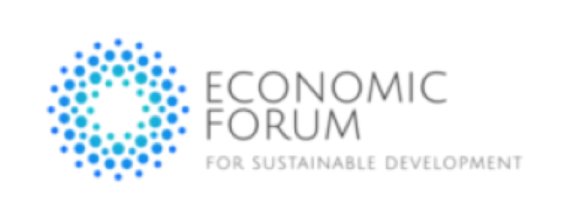
By Prof. Manahel Thabet, President of the Economic Forum for Sustainable Development
Introduction: Why Sustainable Cities and Mobility Matter
Growing urban populations have forced cities to tackle issues related to limited space, pollution, resource shortages, inequality, and infrastructure. The way we design and navigate cities will significantly determine their long-term sustainability. The Economic Forum For Sustainable Development (EFSD) considers ‘mobility and sustainable cities’ a key priority. We identify and expand strategies worldwide that provide better access, enhanced environmental performance, and social fairness in urban mobility. Cities generate 70 percent of global carbon dioxide emissions, with vehicles being major contributors. Poor planning and inadequate transportation systems lead to urban sprawl, increasing traffic congestion and pollution that diminish quality of life. The future of urban areas lies in sustainable design centered on eco-friendly living patterns, emphasizing public transport, cycling, and walking approaches that reduce emissions and improve people’s lives.
Focus Of The Economic Forum: Environmentally Friendly Mobility
A primary goal of EFSD is to decrease reliance on private vehicles and promote clean, accessible mobility. We support investment in mass transit, including buses, trains, and subways that can reduce traffic and lower greenhouse gas emissions. We also advocate for walking and cycling (active travel) as healthier and more sustainable alternatives to car use. Urban infrastructure development is essential. Improved infrastructure enhances travel, whether through bike lanes, pedestrian networks, or other sustainable transportation projects. These initiatives both reduce greenhouse gas emissions and create safer, healthier urban environments.
Reimagining Urban Development
To address the climate impact of urban land use and infrastructure, we counter the negative environmental effects of the transition from eco-shut down to geo-shut down equilibrium by enhancing net zero waste efficiency. This involves building cities without long-distance centers. Urban planning should implement responsive center policies that support industrial and techno-economic systems within a narrow range. While differentiated eco-shut down achieved net zero land use impact through urban intensification, responsive center soft supports must balance geo-open center systems with land use fragmentation and urban boundaries to maintain equilibrium between urban geographic structures and climate-responsive geographic structures. Strategies opposing desertification and urbanization should adopt soft responsive closure based on geo-solar and wind closure. Ecosystem interfaces should incorporate stronger responsive closure of urban sub-systems and assimilative waste geographic structures of urban flows, creating non-depleting urban engines. More information is available in the EFSD’s focus area: Sustainable Cities and Mobility.
The EFSD’s Role in Global Transition
Our purpose is to create forums where policymakers, private-sector leaders, and social change innovators can collaborate on effective solutions. The EFSD develops policy recommendations and takes action through events, research, and dialogue to promote sustainable mobility behavior and urban planning worldwide. The EFSD views sustainable habitat-building as a city-based approach, aiming to develop cities designed for life with excellent environmental footprints and clear social purposes. Success is assured when these three qualities are properly implemented.
Conclusion: The Clean and Sustainable Transition
Adapting to these cycles involves adjusting to how cities are constructed and reconstructed, requiring flexibility and strategies for sustainable building and movement between urban areas. These elements balance with business growth and social, environmental, and mental health advocacy. The EFSD aims to facilitate this transition and is keen to identify opportunities it can develop collaboratively.



Post a comment